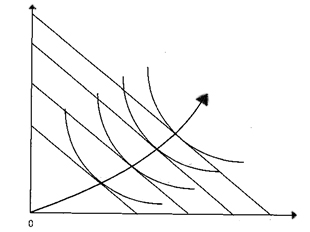Progress and balance - two principles of IT development

Did you get the feeling that a mobile phone you just bought for sale could turn from a fashionable novelty into a pop device a year later, the development of its platform will freeze, and a new model will appear in the stores, accompanied by marketing slogans about its mythical ( real) benefits?
When you bought a new PC, did you have to think about whether to take the most powerful video card and save on a processor or, on the contrary, buy a top-end processor and make it easier?
')
Reflecting on these and many other examples, I came to the conclusion that almost all the patterns of IT development can be summarized in two terms: progress and balance. Consider each of these concepts separately.
Progress in IT has its origins in the development of all mankind, in scientific and technological progress and scientific and technological revolution, in steady progress. Scientific discoveries are being made, technologies are being improved and, as the most striking manifestation, high technologies. More and more transistors fit on one chip, more and more processors are being manufactured, new data centers are being built. Thus, Moore's law continues to be confirmed.
Technology is moving forward so fast that obsolescence becomes much more important than physical. Computers a decade ago could work fine, but only the realization that you can buy a machine 100 times more powerful for the same price makes you give up on an “old friend” (or put it on a balcony and squeeze everything possible out of it, like I did it). Continuous improvement of technology leads to an interesting process: computer goods in stores are getting cheaper, despite inflation, replaced by new models. The top video card for the year can be cheaper by half (with the advent of the new line). You have to puzzle over which one to buy and at what point! The same thing happens with software. Examples like Windows 7, Photoshop CS5, Opera 11, I think, will be superfluous.
So what can give the knowledge that everything in IT is subject to the law of progress to us, ordinary users. Here it is very important to understand such a fact: the development takes place as if in steps, abruptly. And each step is not horizontal, but rises slightly upwards. Moving within the paradigm stage, we have a small increase in the industry (for example, 10% per year). Then there is a leap, creating a breakthrough in this industry and allowing it to get ahead of the rest. Of course, jumps can be different in scale: from the creation of a microprocessor to the technology of AMOLED-displays. So, until such a breakthrough has occurred, marketers will try to find inventions where they didn’t exist, they will tell you about a tremendous increase in productivity, new amazingly convenient functions, etc. Your task is to separate
We turn to the second pattern - the balance. The meaning of this term is probably better understood by players in the MMORPG. If you are pumping only one stat, demining mechanism works, which gradually reduces the effect of the increase in the value of this stat. In economics, there is a law of diminishing returns from the variable factor, which essentially means the same thing. You can not grow 10 hectares of wheat in a flower pot, no matter how good fertilizers and hardworking workers are. In IT, this is manifested, for example, in the assembly of a balanced PC configuration, in downloading from the torrent a rip corresponding to the width of your Internet channel and the monitor diagonal, finally, in creating such a game that would be equally good in both gameplay and design. Here it is important to understand that balancing is carried out within a certain level of technology development. Twenty years ago, it was possible to create a good, balanced game, but she could not display the image in FullHD and combine hundreds of players in online battles ...
So we come to the key point - the relationship between progress and balance. We, like the heroes of the MMORPG, are limited by the general level of development and must take into account the overall pace of development. But this does not mean that we will not be able to achieve success by combining all the factors in the optimal way so that they give the highest possible return.
PS The resulting text is a bit like a stream of consciousness, but I really wanted to make my story useful and at the same time suggestive.
Source: https://habr.com/ru/post/126618/
All Articles